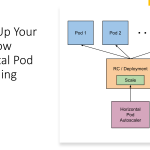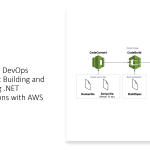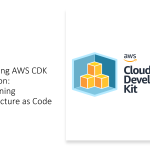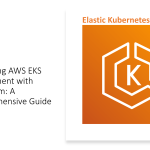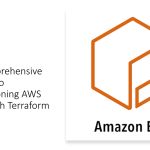As the world of software development continues to evolve, the need for robust infrastructures and efficient monitoring systems cannot be overemphasized. Whether you are an engineer, a site reliability engineer (SRE), or an IT manager, the need to harness the power of tools like Amazon Web Services (AWS), Elastic Kubernetes Service (EKS), Kubernetes, Terraform, and Python are fundamental in ensuring observability and effective monitoring of your applications. This blog series will introduce you to the fascinating world of these technologies and how they work together to ensure optimal performance and observability for your applications.
A Dive into Amazon Web Services (AWS)
Amazon Web Services (AWS) is the global leader in cloud computing. It provides a vast arsenal of services that cater to different computing, storage, database, analytics, and deployment needs. AWS services are designed to work seamlessly together, to provide a comprehensive, scalable, and cost-effective solution for businesses of all sizes.
In the context of observability, AWS offers services like CloudWatch and X-Ray. These services offer significant insights into the performance of your applications and the state of your AWS resources. CloudWatch enables you to collect and track metrics, collect and monitor log files, and respond to system-wide performance changes. On the other hand, X-Ray provides insights into the interactions of your applications and their underlying services.
AWS also integrates with Kubernetes – an open-source platform that automates the deployment, scaling, and management of containerized applications. Kubernetes on AWS offers you the power to take full advantage of the benefits of running containers on AWS.
Elastic Kubernetes Service (EKS)
So, what is Elastic Kubernetes Service (EKS)? EKS is a fully managed service that makes it easy for you to run Kubernetes on AWS without needing to install, operate, and maintain your own Kubernetes control plane. It offers high availability, security, and scalability for your Kubernetes applications.
With EKS, you can easily deploy, scale, and manage containerized applications across a cluster of servers. It also integrates seamlessly with other AWS services like Elastic Load Balancer (ELB), Amazon RDS, and Amazon S3.
Getting started with EKS is quite straightforward. You need to set up your AWS account, create an IAM role, create a VPC, and then create a Kubernetes cluster. With these steps, you have your Kubernetes environment running on AWS. The beauty of EKS is its simplicity and ease of use, even for beginners.
Kubernetes & Terraform
Kubernetes and Terraform combine to provide a powerful mechanism for managing complex, multi-container deployments.
- Kubernetes: Kubernetes, often shortened as K8s, is an open-source platform designed to automate deploying, scaling, and operating application containers. It groups containers that make up an application into logical units for easy management and discovery.
- Terraform: Terraform, on the other hand, is a tool for building, changing, and versioning infrastructure safely and efficiently. It is a declarative language that describes your infrastructure as code, allowing you to automate and manage your infrastructure with ease.
- Kubernetes & Terraform Together: When used together, Kubernetes and Terraform can provide a fully automated pipeline for deploying and scaling applications. You can define your application infrastructure using Terraform and then use Kubernetes to manage the containers that run your applications.
Python for Monitoring & Observability
Python is a powerful, high-level programming language known for its simplicity and readability. It is increasingly becoming a preferred language for monitoring and observability due to several reasons.
Versatility
Python is a versatile language with a rich set of libraries and frameworks that aid monitoring and observability. Libraries like StatsD, Prometheus, and Grafana can integrate with Python to provide powerful monitoring solutions.
Simplicity
Python’s simplicity and readability make it an excellent choice for writing and maintaining scripts for monitoring and automating workflows in the DevOps pipeline.
Performance
Although Python may not be as fast as some other languages, its adequate performance and the productivity gains it provides make it a suitable choice for monitoring and observability.
Community Support
Python has one of the most vibrant communities of developers who constantly contribute to its development and offer support. This means that you can easily find resources and solutions to any problems you might encounter.
AWS Monitoring
Monitoring is an essential aspect of maintaining the health, availability, and performance of your AWS resources. AWS provides several tools for monitoring your resources and applications.
- CloudWatch: Amazon CloudWatch is a monitoring service for AWS resources and applications. It allows you to collect and track metrics, collect and monitor log files, and set alarms.
- X-Ray: AWS X-Ray helps developers analyze and debug distributed applications. With X-Ray, you can understand how your application and its underlying services are performing and where bottlenecks are slowing you down.
- Trusted Advisor: AWS Trusted Advisor is an online resource that helps you reduce cost, improve performance, and increase security by optimizing your AWS environment.
The Role of Observability
Observability is the ability to understand the state of your systems by observing its outputs. In the context of AWS, EKS, Kubernetes, Terraform, and Python, observability means understanding the behavior of your applications and how they interact with underlying services.
Observability is like a compass in the world of software development. It guides you in understanding how your systems operate, where the bottlenecks are, and what you need to optimize for better performance. AWS, EKS, Kubernetes, Terraform, and Python offer powerful tools for enhancing observability.
Observability goes beyond monitoring. While monitoring tells you when things go wrong, observability helps you understand why things went wrong. This is crucial in the DevOps world where understanding the root cause of problems is paramount.
SRE Principles in Practice
Site Reliability Engineering (SRE) is a discipline that applies software engineering principles to operations with a goal of creating ultra-scalable and highly reliable software systems. AWS, EKS, Kubernetes, Terraform, and Python are tools that perfectly align with SRE principles.
The primary goal of SRE is to balance the rate of change with the system’s stability. This requires an understanding of the systems and the ability to observe their behavior. AWS, EKS, Kubernetes, Terraform, and Python provide the mechanisms to achieve this balance.
SRE involves automating as much as possible. AWS provides the infrastructure, EKS and Kubernetes handle the orchestration of containers, Terraform manages the infrastructure as code, and Python scripts can automate workflows. With these tools, you can create an environment where the principles of SRE can thrive.
Therefore, AWS, EKS, Kubernetes, Terraform, and Python are not just tools but enablers of a more efficient, reliable, and robust software ecosystem. By leveraging these technologies, you can create systems that are not just observable but also robust and scalable.
